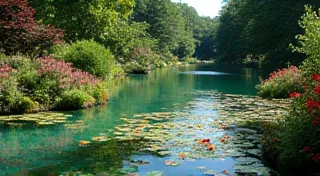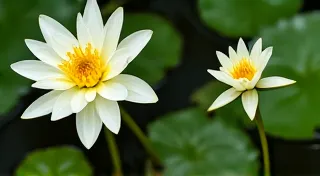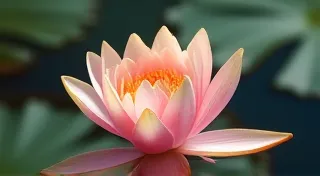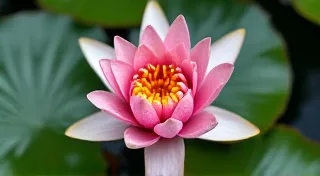The Symbolism and History of Water Lilies
Water lilies, those serene and beautiful blooms floating gracefully on the water's surface, hold a surprisingly rich history and deep cultural significance across various societies throughout the world. More than just aesthetically pleasing additions to ponds and water gardens, they’re entwined with mythology, spirituality, and even practical applications. The allure of these aquatic plants extends beyond mere beauty, inspiring art, literature, and practical uses throughout history. If you’re considering incorporating these captivating flowers into your own landscape, you might be interested in learning more about designing a water lily pond and creating a stunning water garden.
Ancient Egypt: Rebirth and the Sun
In Ancient Egypt, the water lily (specifically the blue lotus, *Nymphaea caerulea*) was incredibly important. It symbolized rebirth and the sun. The lotus flower was believed to be the flower of creation, emerging from the primordial waters of chaos to represent the beginning of the world. The sun god Ra was often depicted rising from a lotus flower each morning, reinforcing this association with renewal and divine power. The petals were used in perfumes and cosmetics, and the seeds provided sustenance. Depictions of the water lily are prevalent in Egyptian art and architecture, highlighting its central role in their beliefs. The cyclical nature of the lotus bloom, dying back and then re-emerging, further emphasized the concept of resurrection and eternal life which were central tenets of Egyptian cosmology.

Eastern Traditions: Purity, Enlightenment, and Peace
Across Eastern cultures, the water lily – particularly the pink and white varieties – carries similar themes. In Buddhism, the lotus represents purity of mind and body, often signifying spiritual awakening and enlightenment. The flower's ability to rise from muddy waters to bloom in pristine beauty is a powerful metaphor for overcoming adversity and achieving spiritual growth. This resilience echoes in the broader concept of impermanence, a core philosophical principle in Eastern thought. Similar symbolism exists in Hinduism, where the lotus is associated with Lakshmi, the goddess of wealth and prosperity, and with Brahma, the creator god. The lotus’s journey from submerged seed to radiant bloom mirrors the spiritual path itself – a gradual unfolding towards a higher state of being. The fleeting nature of the bloom, however, also reminds us of the transient beauty of existence, prompting reflection on the present moment.
In China, the water lily (often referred to as the lotus) is a highly regarded symbol of summer, beauty, and perfection. It embodies the ideals of overcoming challenges and achieving purity through perseverance. The unfolding petals symbolize a gradual opening to knowledge and understanding. The way the lotus gracefully emerges from the water, seemingly untouched by the murkiness below, speaks to the potential for inner beauty and strength even in challenging circumstances. The Chinese appreciation of water lilies, like all elements of their traditional art forms, values harmony and balance, reflecting a deep connection with nature.
Victorian Era: Modesty and Purity
The symbolism of water lilies extended to Victorian England, where they were embraced as symbols of purity, innocence, and grace. Their connection to water – traditionally associated with cleansing and renewal – further enhanced these meanings. The gentle beauty of the water lily complemented the Victorian ideals of feminine virtue and modesty. The delicate petals and quiet elegance of the water lily mirrored the societal expectations placed upon women during this period, representing refinement and inner strength. The increasing popularity of garden ponds in Victorian estates further cemented the water lily’s association with tranquility and domestic harmony.
Practical Uses Throughout History
Beyond their symbolic significance, water lilies have also been utilized practically throughout history. The rhizomes (underground stems) have been eaten as a source of food in various cultures. They are also a source of starch and can be processed into flour. The leaves have historically been used for medicinal purposes, and the flowers have been incorporated into perfumes and essential oils. Historically, the hardy nature of the water lily rhizomes made them a reliable food source, especially in areas where other crops were scarce. Indigenous communities developed sophisticated techniques for cultivating and processing the plant, demonstrating a deep understanding of its properties.
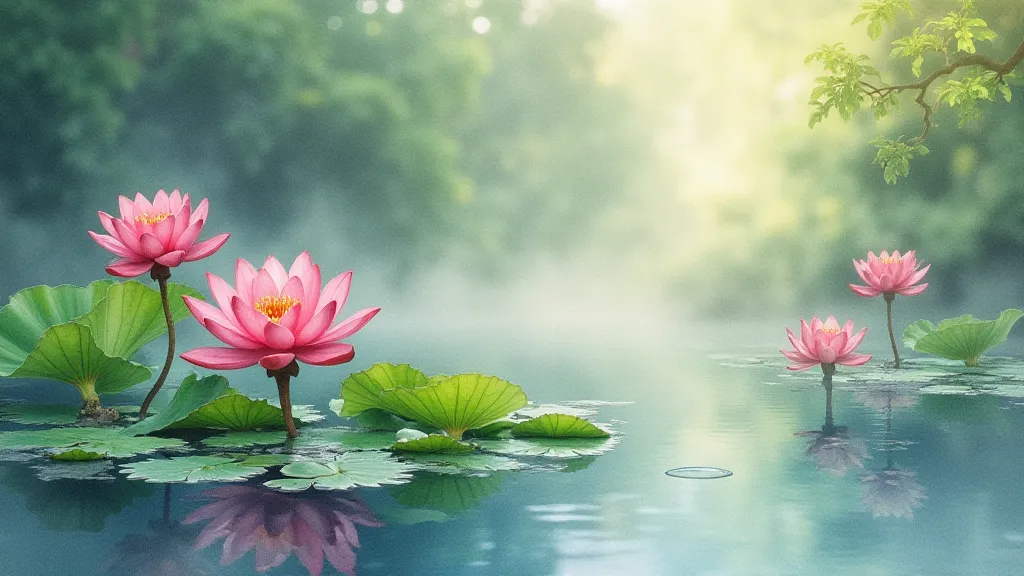
The Ephemeral Beauty of Water Lilies and the Power of Narrative
The brief lifespan of a water lily bloom – its unfolding in the morning and eventual decline by evening – has captivated cultures and artists for centuries. This fleeting beauty, much like other temporary phenomena in nature, prompts reflection on the nature of time and change. It is a reminder that even the most exquisite things are subject to decay and renewal, and that the appreciation of beauty lies in recognizing its transient nature. Considering the overall design of your garden and the elements you choose to incorporate is often a profound, narrative process. If you’re exploring how transient beauty and narrative arc are intertwined in garden design, you might find additional inspiration by reading about ephemeral bloom and narrative arc.
Water Lilies in Art and Literature
The aesthetic appeal of water lilies has inspired countless artists and writers. Claude Monet famously dedicated a significant portion of his career to painting water lilies, capturing their ethereal beauty in his iconic “Nymphéas” series. Their presence in literature often represents tranquility, reflection, and the power of nature. Beyond Monet, numerous artists across various cultures have incorporated water lilies into their works, recognizing their symbolic depth and visual appeal. The ability of the water lily to transform a pond into a haven of peace and beauty has consistently made it a favorite subject for artistic expression.
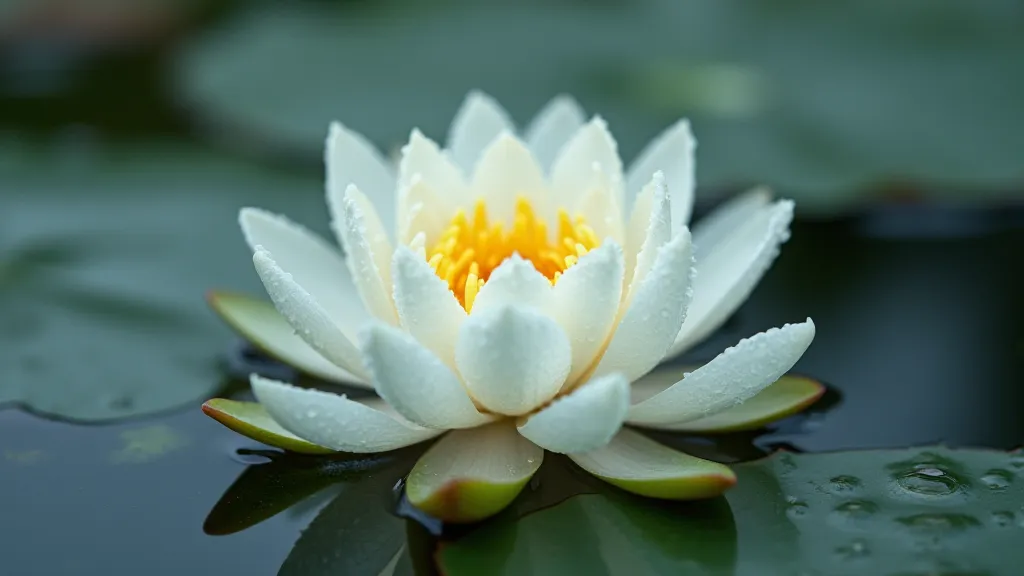
Caring for Water Lilies: Regional Considerations and Timing
Successfully cultivating water lilies requires an understanding of regional climate and seasonal changes. Depending on your location, you may need to implement specific strategies for overwintering the plants to protect them from freezing temperatures. Different varieties of water lilies have varying levels of cold hardiness, and selecting the right species for your climate is crucial. Proper timing for planting, fertilizing, and dividing water lilies is also essential for maximizing their growth and bloom potential. For guidance on overwintering water lilies based on your region, consult a specialized resource.
Protecting Your Water Lily Pond: A Guide to Pest and Disease Control
Maintaining a healthy water lily pond requires vigilance in addressing potential pest and disease issues. Common problems can include aphids, snails, and fungal infections. Early detection and appropriate treatment are key to preventing widespread infestations. Implementing preventative measures, such as introducing beneficial insects and maintaining good water circulation, can help minimize the risk of problems arising. For detailed information on pest and disease control for water lilies, consult a horticultural expert or online guide.
Conclusion
From ancient rituals to modern art, the water lily’s story is a testament to its enduring appeal and profound symbolism. These beautiful aquatic plants offer more than just aesthetic pleasure; they provide a window into the cultural and spiritual values of civilizations throughout history, reminding us of the power and beauty that can be found in the natural world. Understanding their history, symbolism, and care requirements enhances our appreciation for these remarkable plants and allows us to integrate them meaningfully into our own lives and landscapes.
